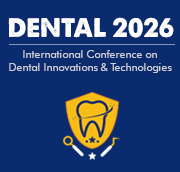Title : Osteonecroses related to the medication of the jaws are severe complications of the use of anti-resorption and anti-angiogenic therapy. How to treat
Abstract:
The growing success of anti-resorptive (bone resorption inhibitors) and anti-angiogenic drugs in the treatment of cancer has significantly increased the risks of medication-related jaw osteonecrosis (MRONJ). Osteoporosis is also at risk for the use of medication, especially when surgical dental procedures such as tooth extraction or dental implants are performed. Dentists' prior knowledge of the adverse effects of bisphosphonate therapy (BFs) in patients in need of dental rehabilitation is extremely important in the management of these patients, since BFs can impair the longevity of the dental implant, as well as induce osteonecrosis of the jaws. The histopathological characteristics of osteoradioncecrosis, osteomyelitis and osteonecrosis of the jaws related to drugs showed several histological similarities which were found among the diseases, mainly with regard to the presence of bone necrosis, inflammation and microorganisms. Many treatments for MRONJ are sought and have been reported, such as antibiotics, surgical procedures and photodynamic therapy, although no definitive protocol is accepted by all institutions. The PENTO protocol (pentoxifylline and tocopherol) has been reported in many studies for osteoradionecrosis, showing a significant improvement in bone recovery capacity. The objective is to report the experience of the creation of an outpatient clinic for the treatment and prevention of osteonecrosis of the jaws at a public reference Erasto Gaertner Cancer Center in the south of Brazil. We report 11 cases of patients undergoing cancer treatment who had MRONJ and were treated with the PENTO protocol. Of these patients, 73% (n = 8) improved their clinical condition and 45% (n = 5) achieved complete remission. The average time of medication use was 4.72 months. It has been shown that the PENTO protocol is more accessible and tolerable than other options for the treatment of osteonecrosis, with high rates of clinical response. Final considerations: The PENTO protocol is a good option as a conservative treatment for MRONJ.



